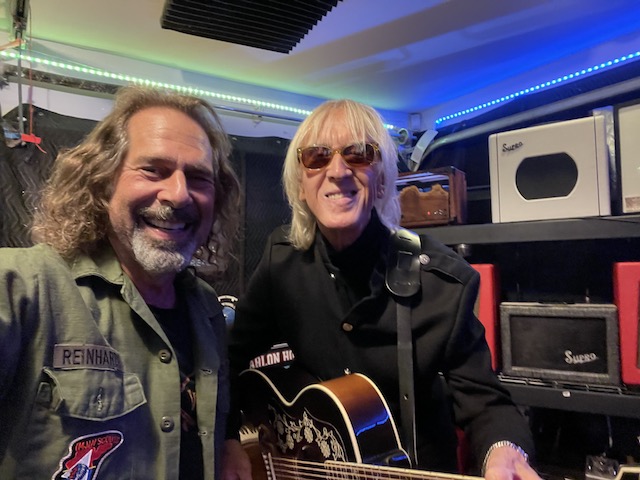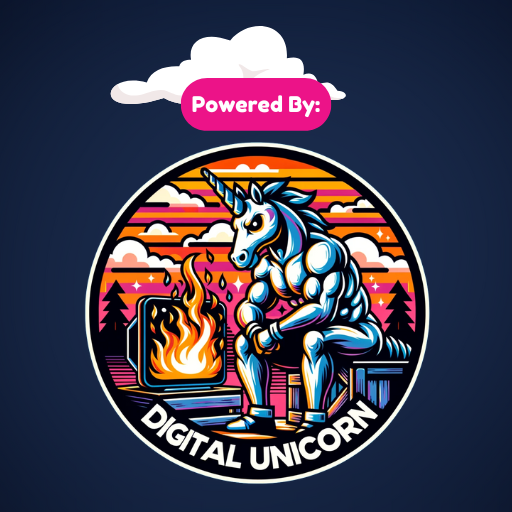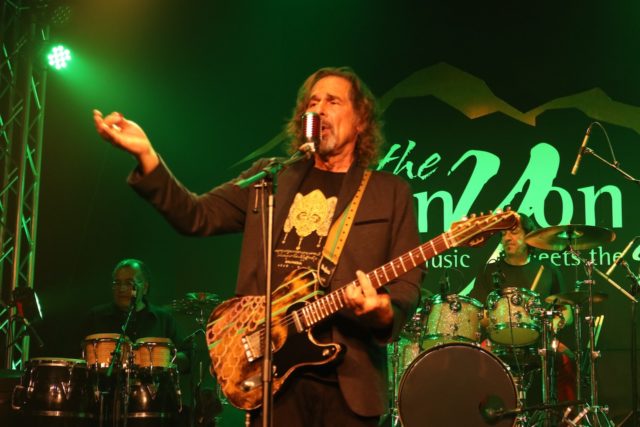 Marlon Hoffman has led a very interesting life, both in the music business as an artist and also as a fan. He’s presently recording a new album, with many friends of his that others would love to have on an album. Drummer, vocalist, guitarist and writer, he’s become one of that rare breed of musicians that the public may not know so well, but other musicians know him and his talents. They’re always willing to help a hand with one of Marlon Hoffman’s projects. And Marlon’s projects are things that should be checked out end enjoyed by every one.
Marlon Hoffman has led a very interesting life, both in the music business as an artist and also as a fan. He’s presently recording a new album, with many friends of his that others would love to have on an album. Drummer, vocalist, guitarist and writer, he’s become one of that rare breed of musicians that the public may not know so well, but other musicians know him and his talents. They’re always willing to help a hand with one of Marlon Hoffman’s projects. And Marlon’s projects are things that should be checked out end enjoyed by every one.
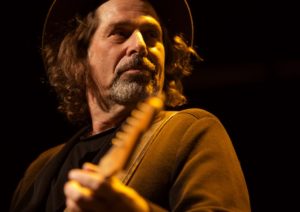 Over the years, Marlon has acquired a great amount of stories. And unlike many who cannot articulate them, Marlon is one of those rare people who can tell them and keep your interest no matter how many stories he tells. He’s personable and keeps you riveted on the stories he tells. Marlon has recently released a pair of albums which are a great way to hear the depth of his artistry. Le Happy Vol. 1 and La Paix Vol. 2 were both recorded at Village Recorders, the storied recording studio that has recorded artists such as Steve Nicks and Fleetwood Mac, the Rolling Stones and B.B. King; to newer artists such as Coldplay, Lady Gaga and Kesha.
Over the years, Marlon has acquired a great amount of stories. And unlike many who cannot articulate them, Marlon is one of those rare people who can tell them and keep your interest no matter how many stories he tells. He’s personable and keeps you riveted on the stories he tells. Marlon has recently released a pair of albums which are a great way to hear the depth of his artistry. Le Happy Vol. 1 and La Paix Vol. 2 were both recorded at Village Recorders, the storied recording studio that has recorded artists such as Steve Nicks and Fleetwood Mac, the Rolling Stones and B.B. King; to newer artists such as Coldplay, Lady Gaga and Kesha.
Currently Marlon has a new project going on, with many of the people he mentioned about being involved in it. It’s being recorded now and promises to have some excellent music on it. With many people that The Boise Beat has interviewed over the years, it’s better to just take bits and pieces and rewrite them. When it came to this Marlon Hoffman interview, it was apparent early on that it’s better to just leave Marlon’s interview as is. He’s like so few people these days—a true storyteller, talented performer and someone who’s had a lifelong love of music.
Q: You started playing in bands at the age of 12. What appealed to you most about playing rock and roll?
A: I remember rock and roll really moved me. My father, who passed away a number of years ago, used to sing You Ain’t Nothin’ But A Hound Dog to me. He sang it to me with a lot of energy, so that was like going into my system very early. My mother was always dancing and listening to music. There was mucho rock in my life early on. And not just rock—blues; everything from Ella Fitzgerald, Mitch Mitchell, Burl Ives, Fess Parker. We’re talking early 60s, late 50s, then of course Elvis. Chubby Checker and The Four Seasons. The Beach Boys and The Beatles; it was all there. I was sent away to boarding school very young in life; I was 9 years old. They were getting divorced, they thought it was better if I was ‘away from the home’.
When I did that, it was 1963, Kennedy was just killed. I had already had a record player, a Masterworks record player back when those kinds of record players opened up with the speakers; and the turntable flipped down. My grandparents gave me one and I had a few records; the soundtrack to Leonard Bernstein’s West Side Story; The Greatest Hits of the Four Seasons, The Beach Boys Little Deuce Coupe. I had a handful of 45s; and when I went up to this boarding school on Long Island—I’m from St. Louis Missouri but I was sent away to this boarding school on Long Island—it was a little boarding school. The Beatles came out and I was just—I had an ear and my body just perceived it. I was waiting for the record to come out, Meet The Beatles; but it was postponed because of Kennedy’s assassination, so when it came out I was at the record store with my five dollars and ninety-five cents or whatever it cost. I forget. And I had the album!
There was a drummer at that school, he had a set of red Ludwigs; and I stood next to those drums—I was infected! I had to have my own set of drums and I had to be a musician. When I got back to St. Louis, I said to my father, ‘I’d like to be a drummer’. He bought me a blue set, a blue sparkle set of drums. It came out of the trunk of his car because he was visiting since they were divorced. I just started taking lessons from every drum teacher in St. Louis. The best drum teacher was named McClinton Rayford. He played at the Playboy Club and he taught. He had played with Count Basie; he was like a Modern Jazz Quartet kind of guy; like Roy Haines or Joe Morello. He was a real drummer, like any of those drummers from the jazz days.
He was a strict jazz teacher, so I became a pretty good drummer in elementary school. I played in the symphony and the orchestra and became a pretty proficient jazz drummer. But the Beatles came out and the Who; and I started playing all of that stuff very well. I was already in a band by the time I was 12. I think I was in a band when I was 11 with a banjo player down the street. But then I got with some guys who had electric guitars and bass guitars and a microphone PA. I was playing at parties as a drummer, playing all the different things that the Kinks did, the Beatles, the Yardbirds—we did a lot of Yardbirds songs. So I was infected very early on with rock ‘n’ roll. I progressed to blues and jamming music later as a drummer.
It wasn’t until I was divorced and out of college that I traded my drums for a Telecaster guitar and a 1927 Epiphone f-hole guitar. I started carrying those around. So I pretty much took all my right-handed drum acumen to the guitar. I’m doing a lot of leads now; for years I was a rhythm guitar player, but I was such a good drummer that a drummer had to be a good drummer to play with me. My band always had a lot of dancing and a lot of good rhythm. Once you’re a good drummer people want you to play with them. I made friends with Kinky Friedman and the Texas Jew Boys. He was a buddy of mine, we knew Abbie Hoffman and a few other people. Kinky had me play at the Lone Star Cafe with him. Abbie Hoffman, when he was in between his hiding places and jail, got up on stage and he did a pretty strong rendition of I’m Proud to be an Asshole From El Paso.
Q: Who were some of the famous rockers you’ve met over the years?
A: I took a lot of left turns to get where I am now. Within those left turns I got to meet a lot of different people. One guy that I keep bumping into for many years and he’s still a friend of mine, I’ve been to his house, is John McEuen, from the Nitty Gritty Dirt Band. He’s a good friend of mine. I was working First Aid backstage for the promoter, in Denver, Barry Fey. I was part of a group, hippie first aiders that that had the Haight Ashbury kind of Free Clinic deal in Denver. It’s called the University of Denver Open Clinic. We were backstage at all the rock concerts taking care of people that were overdosing. We got to meet all the musicians. A guy came up and rubbed my back during the Bangladesh concert. He said he needed a chiropractor. I looked down and it was George Harrison. He was only rubbing my back because it was too loud for him talk; ‘I need a chiropractor ‘her was telling me! I froze, and I almost fainted, and I told him I couldn’t help him but one of my friends could. And asked him ‘could you sign my shirt’. (laughs). Which he very generously did!
Another rocker I met when I was 14. My father gads taken me to Miami Beach, Florida for a vacation. We were at the Beau Rivage Hotel on Ocean Drive. My little sister came up to me and said there was a Yardbird out in back on the sand, laying down. I said, ‘NO WAY!’. So I went out–this was 1968. I went out to the back and I had a crewcut; I looked like I was with the Beach Boys band. I had paid shorts and a white t-shirt on. Number One, you had to dress like that. I looked down at this skinny little guy, with white skin and long black hair, looking like an angel. I said, ‘Are you a Yardbird?’. He said, ‘Yeah’, I said, ‘What’s your name?’. He said, ‘Jimmy Page’. I hadn’t heard of him at that time yet, I knew of Jeff Back and Eric Clapton. He had replaced those guys. So I told him I was in a band and we played a lot of Yardbirds songs. We talked about For Your Love, Heart Full of Soul, Over Under Sideways Down—I’d played all those songs by then.
He was very impressed and said, ‘Let me talk to your father’. My dad was up there of course, and they talked. He borrowed me to be his band boy for two days. I got to carry his guitar to the concert at a place called the Blues Image. It was owned by the guy that wrote Ride, Captain Ride, upon your mystery ship. The place was the Image and the Yardbirds had played a couple of tours there. This was the last tour of the Yardbirds before Led Zeppelin started. Jimmy told me then that they had a band and a deal with a record company. He wouldn’t tell me the name, but just that they were breaking up and starting a new band. But Richard Cole and Peter Grant were with him; and I took them all—because I had a Red Cross Card for canoeing from summer camp—they wanted to know how to do a boat. So I took them out in a dinghy in the ocean when I was 14! That was very exciting.
Three years later, I looked more like a hippie. And I had a paisley shirt and bell bottom pants. I was in St. Louis when Led Zeppelin came to town. I went to the side security guards and said I was friends with Jimmy Page, could you go get him? He came out and I tried to tell him the story but I think he was a little under the influence and didn’t remember me; and he broke my heart (big laughs). And so I said to myself, ‘I’m never going to work for somebody like that again!’.
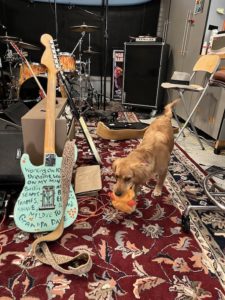 I’m a member of an organization now called AlertTheGlobe.com. It’s a streaming company, it doesn’t cost anything. You just go to Alert The Globe, sign up, and you get all these free concerts and all these things from musicians. Waddy Wachtel is on the board; Bernard Fowler, who is a friend of mine, from the Rolling Stones is on the board, Gregg Bissonete from Ringo’s All-Star Band; and Macy Gray just joined. It’s called AlertTheGlobe.com. I did probably 11 concerts in the last two years, either at a club or at my home studio that are posted on that. Just type in Marlon Hoffman Band and they’ll pop up; and there’s a lot of music on there from many other musicians too, and you probably know all of them. The Delgado Brothers, I love the Delgado Brothers. They’re like the ‘Latin Little Feat’. For me they’re just great; and their history is incredible. For the people nationally who don’t know the Delgado Brothers, they’re wonderful. They in that group too, so it’s AlertTheGlobe.com.
I’m a member of an organization now called AlertTheGlobe.com. It’s a streaming company, it doesn’t cost anything. You just go to Alert The Globe, sign up, and you get all these free concerts and all these things from musicians. Waddy Wachtel is on the board; Bernard Fowler, who is a friend of mine, from the Rolling Stones is on the board, Gregg Bissonete from Ringo’s All-Star Band; and Macy Gray just joined. It’s called AlertTheGlobe.com. I did probably 11 concerts in the last two years, either at a club or at my home studio that are posted on that. Just type in Marlon Hoffman Band and they’ll pop up; and there’s a lot of music on there from many other musicians too, and you probably know all of them. The Delgado Brothers, I love the Delgado Brothers. They’re like the ‘Latin Little Feat’. For me they’re just great; and their history is incredible. For the people nationally who don’t know the Delgado Brothers, they’re wonderful. They in that group too, so it’s AlertTheGlobe.com.

I have another story about meeting a rocker….this one is a good one! The first concert I ever went to, in St. Louis, Missouri, at the Kiel Opera House, was the ‘Where The Action Is’ show, led by Bobby Sherman. There was Gary Lewis and the Playboys, and my favorite band at the time, Paul Revere and the Raiders. I snuck backstage at that to see their bass player “Fang” (Phil Volk). I was like, 14; and he just had this funny look. We were all goofy then, everybody acted like they were in the Monkees or the Beatles, so I so I said, ‘could I touch your belly button?’ and he said ‘sure’. Then I poked him in the stomach and I was so thrilled!. Isn’t that crazy. I just love rock and roll and I love rockers. My whole like was a lot of fun. And I’m still having fun!
Q: I go back a ways with rock too, my first concert was Iron Butterfly…
A: Here’s a little sidewinder story for you…I love Iron Butterfly, I saw the Grateful Dead open up for Iron Butterfly…that was funny! I love them, I can sing two Iron Butterfly B-side songs right now! The guitar player for Iron Butterly today, 2022, is Mike Pinera. But Mike was the owner of that club, the Image, when I was the band boy for Jimmy Page. He was leader of a band called Blues Image and he had that hit, Ride Captain Ride, so he’s still around. I’m supposed to be meeting him soon, we live in the same neighborhood.
Q: You’re a multi-instrumentalist. What instruments do you play?
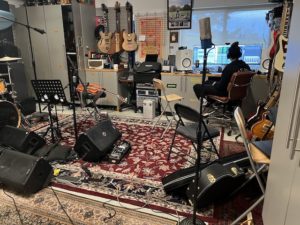
A: I’m not exactly a multi-instrumentalist. I’ve got a good ear and I’m in tune; and I can probably pick up anything and doodle it and come up with a melody on any of my synthesizers or pianos. But I’m really a guitarist and a drummer. Drummer first; and adding playing guitar now. I’ve been playing guitar now longer than I’ve been playing drums now. I have multi-guitars! Some of the greatest guitar makers in the world are my friends! Max Baranet, who makes guitars for Slash, Billy Gibbons, Rick Nielsen and he did some for Tom Petty. He’s a very close friends of mine. I have four of Max’ guitars. I like Rick Kelly, from New York City. He makes guitars out of 200 year old wood. He’s made Bob Dylan’s guitars, he made Lou Reed’s and Lenny Kaye, who plays in Patti Smith’s group. I have two of his guitars. I love luthiers, I love artists, so I support them. The bass player in my band, Jody Daley-Lovett, he’s from Australia, he has a guitar company now, he handcrafts guitars. It’s called JM Lovett Guitars. I have one of the guitars that he makes. I love wood, I love everything about guitars. If you saw my studio you’d say, ‘Yes, that’s true!!!’.
Q: Your new album, La Paix Live at the Village Pt. 2, is a live tour de force. What’s special about live performances to you?
A: It captures the work you’ve done up to that point, if you’re a musician. That particular record was done at Village Recorders, a very well known studio where Fleetwood Mac and Prince, the Police and the Stones and a lot of other people worked at. I got lucky, and met someone that know someone, so I got to be in there. I had been rehearsing with my band for two years on this particular set. My bands are always very well rehearsed and know the songs that I have written; and we just had our show down, it was solid!
So we went in there, and Jeff Gartenbaum, who is a Grammy Award winning engineer, and everybody who is there has a great track record at Village Recorders, he set up the drums and bass for a few hours, and then we laid down the show. We did nineteen songs in one day! He loved every one of them, he said that was the most songs ever done at the Village Recorders that didn’t need to be reworked. We were very well-rehearsed we got a great engineer who set up the mic sand set up the separations and great mixes; and it took me four years to release the two albums. I took all the soft songs and released them as “Le Happy” Volume One, Live at The Village; and that’s the soft songs, a little more country-ish. Then the harder songs, a little more ‘rocky’, were turned into the second album, La Paix, which is French for “The Peace”. That was an amazing time. We are lucky that we get to experience that, that we love sound, art and film so much that we get to be in these cool places. It’s the vibe of the place, people are really dedicated to communicating their art in the best possible way, so these kinds of things that we experience are just memorable. We never forget them.
Q: Who are some of the special musicians who have helped you out with La Paix?
A: The drummer was Mark Greuninger, and he was from the band Toad The Wet Sprocket. He was a very good drummer, very solid. I thought he was a jazz drummer, he was just very good; you can listen to the album and hear how good he is. I asked him, ‘Where did you learn how to play those drums?’ and he said, ‘Dave Matthews’. So he listened to Dave Matthews drummer. That’s a little lesson for you. That’s funny, I was thinking more Elvin Jones, but he said Dave Matthew’s drummer. He’s very good.
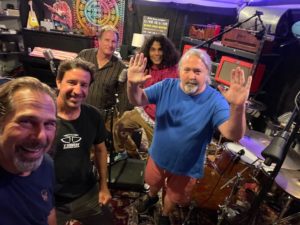
The bass player, Jody Daley, he’s amazing! He’s a touring musician that came from Australia. He’s just a fine, fine bass player. He’s had a lot of experience with Australian bands. He was on a world tour with a band that dropped him off in Vegas. I met him here in Los Angeles. Kris Kadle was on 12 string, he played 12 string on that album. His father was the guitar tech and assistant to Arlo Guthrie, so Kris was raised in Arlo Guthrie’s family his whole life, in Florida, on that farm, so he’s got music in his bones. Kris and I just vibed when we met each other, because I’ve got a lot of slow, country roots from being in Missouri and going to school in Denver. So we just vibed there! On lead guitar is Nick Massey, who actually was a prog rock guitarist, but he loved my songs; and he said he just wanted to help me move along. Nick’s work on that album is absolutely beautiful. Everybody that helped—Jeff Gartenbaum, the engineer was phenomenal. We had a lot of support, a lot of help.
Q: The mid-section of Fah Git About It sounds almost like it was influenced by a Grateful Dead jam. What’s the story with that song?
A: Well…..Once Upon A Time I was an actor, and I always wanted to be in an Italian movie where I got to say ‘Fah Git About It’. It didn’t happen, so in a rock band I decided to do a funky song. It’s funny you mentioned the Grateful Dead. In my mind, I think is supposed to have a slow disco beat like Miss You by the Rolling Stones. But it gets to be a jam; and everybody gets so excited, and the interplay is so good—but yes, it does sound a little bit like the Grateful Dead. I think I was shooting for ‘Disco Stones’ but ended up with ‘Disco Dead’!
Another time to meet some rockers—I’m jumping back, I met Ringo Starr and that was sweet. Another time, when I was 14, I jumped up on stage and sat at Jerry Garcia’s feet when he was playing steel pedal for New Riders of the Purple Sage. They let me sit up there, so I just sat at his feet while he played steel pedal; and looked up at him about 2 feet away for about six songs. I’m always trying to get my face into the music, into the noise—you know what I mean? I’m like a moth to a light bulb! Just trying to get closer and closer. That’s kind of been my path, how close can I get. If I could live inside of an amplifier……
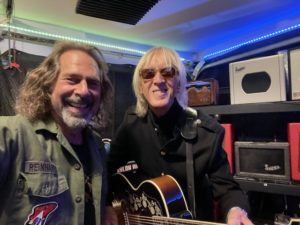
Most recently, Davey Johnstone, the guitar player for Elton John for 40 years; he’s been at my house for the last year making his new album. He finished his album here in my home studio; and it’s called Deeper Than My Roots, it’s coming out in February. Davey Johnstone’s solo album. His son sings on it, Nigel Olsson plays drums on it, Denny Seiwell from Wings is on it. He uses my studio and our engineer Major Wynn, so Davey and I are very close. He played bass on my new album, he helped with some leads, he’s going to be playing guitar on my new album as a guest guitarist. Before he was in Elton John’s band, he was in a band called Magna Carta, which was a lot like Fairport Convention, Tyrannosaurus Rex, Incredible String Band . It was very low kew and sounds Celtic. He’s a wonderful, wonderful guitarist. When he was playing here, I felt like George Harrison was here. They were best friends. He played with John Lennon at Madison Square Garden, so when he was recording here at my house, just sitting in the kitchen listening to him was such an honor.; and I learned a lot from listening to him prepare his album.
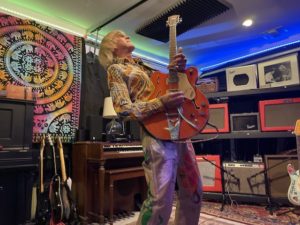
I loved the Outlaws, Waylon and Kris and Willie. My partner/wife/girlfriend Angie, her first birthday present that she bought for me was a book of The Outlaws. When Davey Johnstone called me and asked me to sing one of his songs because I had that ‘Outlaw thing’ going on, I’m very, very in tune with that.
You mentioned Little Feat, so I have to tell you one more story. In the late 70s, I came to Hollywood. I came a couple times—they kicked me out a couple times, but I kept coming back! I met a friend and she introduced me to a friend of hers, who she said was in Frank Zappa’s band. He was in the Family of Man, and he was actually in the first Little Feat album. His name is Elliot Ingber. Elliot Ingber wrote the song Don’t Bogart That Joint My Friend, that was in Easy Rider. When I met him on Santa Monica Boulevard, he had retired from the music business. He was discouraged by it, and he was living off the residuals from Don’t Bogart That Joint My Friend. He gave me a lesson in songwriting—this was ‘78, before the punk movement—he said, Marlon, if you’re going to write a song, you need to remember, you’ve got to get the girl in three minutes! So I had a song, I was angry, and it was a ‘I hate you’ song. I hate this and I hate that, I hate this and you did this to me, you did me wrong and bla bla bla. So I said, the name of the song is I Don’t Want You, and I said I’ don’t want this and I don’t want that’. But at the end of the song, I put in for Elliot, ‘you better watch out, or I’m gonna take you home’. Anyways, it was a funny little story. Apparently now, his brother—I heard recently through a friend of mine who’s an engineer—his brother Ira Ingber is working with Bob Dylan on some kind of a streaming project. That’s an unknown fact, just some gossip I heard this week.
Q: What was the inspiration for the beat and the guitar on The Pope Goes to Town?
A: Bo Diddley! That’s my answer to that. My heart goes out for musicians in the world that==black musicians in the world, that white men took their beats and their soul from Africa and made hits from it. Buddy Holly, the Stones, everybody and me, we used that Bo Diddley beat. Poor Bo Diddley, he got screwed from a lot of his rewards. He ended up I think, as a sheriff in a little trailer park after a while. He’s one of my heroes. Anyone who turns that beat into a rock song, the Bo Diddley Beat, I love it. It’s Not Fade Away—the Grateful Dead did it with Not Fade Away; it’s not Buddy Holly; the Stones did Mona; Quicksilver Messenger Service did Who Do You Love?; countless songs use that beat. I’m an old drummer; boom da boom da da boom boom.
I had eye contact with Jimi Hendrix when I was 14, in St. Louis, 1968. I got a ticket for eight dollars and fifty cents. Third row center, and most of the girls there—they were all little white girls—there was me. Jimi really hadn’t hit mainstream black people, his act was a little too wild. Somebody jumped up on stage and tried to take his picture and the police got rough with him; and Jimi said to the police, ‘No man, don’t hurt nobody, peace, man, peace’. And everybody in the whole audience started putting up their peace signs. I had just finished reading Bobby Seales’ book on the Black Panthers, so I put up my fist, and he looked at me, we locked eyes on each other for a good 15 seconds—I’ll never forget that! I had eye contact with Jimi for 15 seconds, it was great! Yes, I’m a big fan of Jimi Hendrix and his whole Experience. And I was in the Jimi Hendrix museum up in Seattle; I read about him when he was 14 years old; and he got a lot of his ideas from a garage band called Paul Revere and the Raiders. He got the Revolutionary War Jacket idea from them, he got breaking his guitar, because Paul Revere always used to break his organ. Musicians take off of each other, you know what I mean?
Q: Tell me a story from the road……
A: Once I was in a band in the Midwest called The Clones; and I was the lead singer. We wrote a lot of very good songs, we were very popular at the time, ‘83-84. We had a pretty good following and they knew the words to our songs. They danced, and we had a big crowd. We opened up for the Split Enz,for KG Radio in St. Louis. We killed it, it was just one of those magical times. I met a guy who worked for David Geffen, a lawyer, Gregg Le Pettis. He said that if you’re a rock ‘n’ roller, onstage; you bring your set to a place where you feel that time and space has stopped, you’re doing good. I’ve been told that at my concerts there’s many times like that. The music is what you’d expect from a good rock show. So we did it, we killed it, and we went to the dressing room, and the whole crowd followed us to the dressing room, looking for autographs. They thought we were The Split Enz!!! The producers told us we had to go back to the stadium, we had to send a thousand people back. They all rushed us. That was a fun moment!
An opposite moment of that—we were booked in Illinois, and we put all of our stuff in the van we were sleeping in. It was a big gig; a big Halloween party. We got to this big, beautiful club, and rolled that van into the back of the club, opened up, set the stage up with our amps and we were all in our black leather clothes and everything. We were ready to get out there and kill ‘em! We got in the club for the sound check, and there was nobody out there! There wasn’t a soul in the club. One of us walked up to the office to find the owner of the club. There was a light on. He said he forgot to advertise! So we’re set up or a complete club. And here’s the poetry of it all…it’s in my mind, that I love to remember. One of our fans from St. Louis traveled hours to come to the concert, and he was dressed as a hot dog. It was Halloween! So he got out there in the audience and I said ‘Let’s do this show!’. We played our whole show, which was pretty loud and pretty tough. Like an Iggy Pop kind of New Wave thing. Anyways, we played to a dancing hot dog!
The humble don’t crumble; you’ve got to remember that.
Q: You’re also a talented writer, What influences you with your own songs?
A: Well, thank you. I studied writing my whole life. I use journaling and poetry to exercise my emotions, when life gets difficult. So, very young in life, I was writing poetry with tragic things that were happening all around me all the time. So I’d write a little poem, I wrote a little poem when I was 14 about a psychiatrist I’d been seeing. It goes like this:
Life’s poisoned words slide through my entire digestive tract
I’m frantic for twenty five dollars a week
Thanks pal
it works
You know, journaling—it’s how we heal. I studied everybody. Bob Dylan, Allan Ginsburg, William Burroughs, Jack Kerouac, Emily Dickinson, you know, everybody—I studied them all. Jim Morrison, Baudelaire, Arthur Rimbaud, just all the poets you could imagine. And literature. I studied styles of writing. William Burroughs talks about collage writing, which means you can start writing from any point, no matter wherever you are, by just describing what you’re looking at all around you, in a 360, and what you’re feeling. I could do a poem right now, here we go:
Upright, Steinway piano 1916
Mandala, bought in Costa Rica
1970s Jimi Hendrix poster next to Jim Morrison
There’s Superman, but he was bought in Korea
And there’s a poster of the Marlon Hoffman Band
From January 13, Two Thousand and Nineteen
Mike Bloomfield Stratocaster
Oh
Here’s a computer, with a light blinking
And the sun is shining through the window
And oh, there’s George Harrison
Saying All Things Must Pass
You just have to be free to describe what’s in your moment. Eva Marie Saint, the actress, said at 90 something years; ‘The secret to life is to keep moving’.
Q: Thanks Marlon. You’re certainly living in ‘the moment’ and enjoying the music you’re creating.
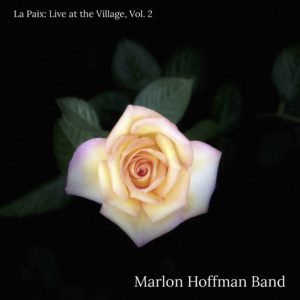 La Paix, Volume 2, Live at Village Recorders, is the latest album released by the Marlon Hoffman Band. The album is available for streaming or downloading on Apple Music or the iTunes Store; and also amazon music. His previous album, Le Happy, Vol. 1, Live at Village Recorders can also be found through those outlets. Further info can be found on Marlon Hoffman’s website and FaceBook Page. Some rock ‘n’ roll, some blues and some great lyrics—Marlon Hoffman can certainly put the music together in a way that will have you singing these tunes for a long, long time.
La Paix, Volume 2, Live at Village Recorders, is the latest album released by the Marlon Hoffman Band. The album is available for streaming or downloading on Apple Music or the iTunes Store; and also amazon music. His previous album, Le Happy, Vol. 1, Live at Village Recorders can also be found through those outlets. Further info can be found on Marlon Hoffman’s website and FaceBook Page. Some rock ‘n’ roll, some blues and some great lyrics—Marlon Hoffman can certainly put the music together in a way that will have you singing these tunes for a long, long time.
All photos courtesy of Marlon Hoffman and Doug Deutsch PR

